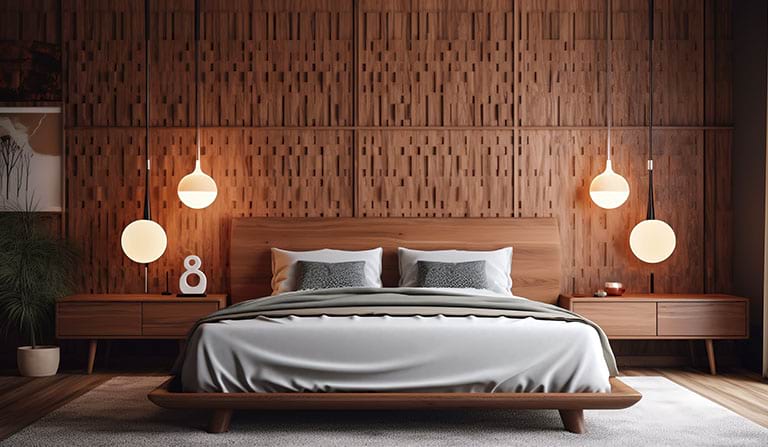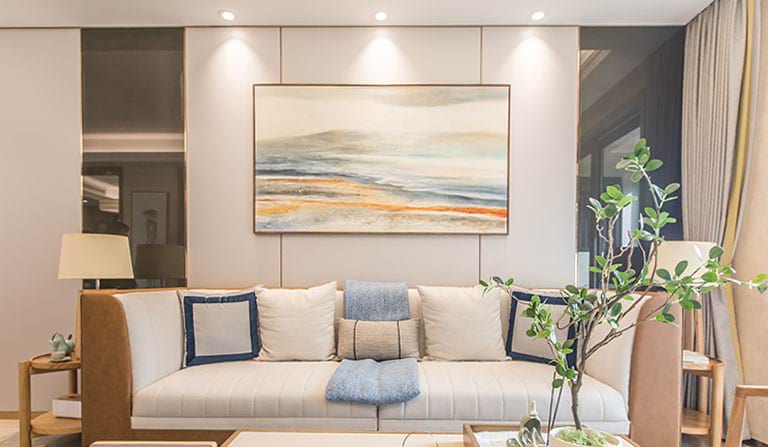Pendant Lights Guide: An In-Depth Guide to Elevate Your Interior Decor
Modern pendant lights, also known as pendant lighting, are a type of illumination device that hangs from the ceiling via a cord, chain, or rod. This adaptable and appealing light source has gained popularity recently due to its potential to enhance any space’s aesthetics. Pendant lights can provide functional lighting, highlight specific areas, or offer general lighting, making them an ideal choice for any interior decor. In this all-inclusive guide, we will explore the concept of pendant lighting, its advantages, and how to select the best pendant lights for your dwelling.
What is Pendant Light?
A pendant light is a kind of illumination device constructed to dangle from the ceiling. Often known as a hanging light, drop light, or suspender, it offers a range of forms, sizes, and designs, simplifying the task of locating one that aligns with your home’s aesthetics. Typically, pendant lights are crafted from materials such as metal, glass, or plastic, and they’re frequently utilized in areas like kitchens, dining areas, living spaces, and bedrooms.
Benefits of Pendant Lights
Integrating pendant lighting into your home’s interior decor offers numerous advantages. To begin with, pendant lights offer task illumination, simplifying tasks such as cooking, reading, or desk work. Additionally, pendant lights serve as accent lights, highlighting specific parts of the room like art pieces or furniture. Lastly, pendant lights can deliver broad lighting, brightening a large portion of the room and fostering a cozy and welcoming ambiance.
Besides offering task, mood, and broad illumination, pendant lights can also boost a room’s overall visual appeal. They are available in an extensive variety of styles and designs, making it effortless to locate one that aligns with your unique preferences and interior decoration style. Regardless of your inclination towards modern, contemporary, classic, or any other design style, there’s a pendant light that will seamlessly blend into your home.
Choosing the Right Pendant Lights for Your Home
Selecting pendant lights for your residence requires careful consideration of a few elements.
Primarily, the dimensions of the room and the ceiling height need to be regarded. The varied sizes of pendant lights necessitate a selection that is in harmony with the room’s scale.
Furthermore, the ceiling’s height will dictate the required length of the cord, chain, or rod.
Finding the right size of pendant lighting
Home & Gardens advises a simple formula to calculate the appropriate size of your pendant light:
First, measure the room’s length and width in feet.
Next, add these two measurements together.
This sum determines the diameter, in inches, your pendant light should have.
For instance, if your room measures 13 feet by 11 feet, a light fixture with a diameter of 24 inches would be suitable.
When considering the pendant’s height, it is advisable to allow the rod to hang approximately one-third of the distance to the floor in a living room. For dining rooms, the pendant should hang 32 to 36 inches above an island or table.
Choosing your pendant lighting style
One should also take into account the design of the pendant light when choosing one. As previously stated, hanging lights are available in an array of designs and styles, so it’s crucial to select one that enhances the entire decor of the space.
The Kitchen Pendant Lights used in the kitchen might vary from those used in the living room. You should also factor in the overall decor style of your house.
For instance, if your home is decorated in a contemporary style, you might opt for a streamlined, minimalist hanging light.
Conversely, if your home has a more classic decor style, you may want to opt for a traditional, elaborately designed hanging light.
Light bulb type for pendant lighting
In conclusion, it’s essential to think about the kind of light bulb you’d like to pair with your hanging lamp. The popularity of LED lights is on the rise because of their energy-saving nature, extended durability, and minimal heat output.
Nevertheless, you still have a variety of other bulbs to consider, such as incandescent, halogen, and CFL variants.
Final thoughts on choosing pendant lighting
Pendant lights are a flexible and fashionable lighting option that brings both utilitarian and ornamental features to a space. They can be hung individually or in clusters, offering task lighting, boosting a room’s appeal, and matching any interior decor style. Given the wide range of designs, materials, and sizes, there’s a pendant light fitting for every home’s illumination requirements. Proper positioning and adjusting the height of pendant lights is crucial to maximize lighting and prevent shadow casting in the room. Given these numerous advantages, it’s not surprising that pendant lights remain a favored choice among homeowners and interior decorators.
Frequently Asked Questions about Pendant Lighting
What is the purpose of pendant lighting?
Pendant lights fulfill two roles: they are practical and ornamental lighting options. They offer focused lighting, typically over designated spaces like a kitchen counter or dining table, and simultaneously contribute to the room’s aesthetics through their design and placement.
What is the difference between a pendant light and a ceiling light?
The key distinction between pendants and ceiling lights lies in how they are fixed to the ceiling. Conventionally, ceiling lights are directly attached to the ceiling, while pendant lights hang from the ceiling through a cord, chain, or rod. This offers pendant lights an advantage in flexibility concerning where they can be located and their design, as they can be positioned at diverse heights and in varied setups.
Are pendant lights out of style?
Hanging lights have maintained their popularity over the years and do not appear to be falling out of fashion. Indeed, their designs persistently grow and transform in novel and creative manners, solidifying them as a classic selection for all types of interior decor.
What are the pros and cons of pendant lighting?
Pendant lighting comes with several advantages such as offering focused illumination, offering design, and location versatility and serving as an attractive addition to any space. Nevertheless, its installation can be more intricate compared to other light fixtures and its costs can escalate if you opt for luxury, designer variants. Also, it might not be the most suitable lighting answer for all spaces or uses, given it can cast shadows and result in irregular lighting in some situations.








Leave a comment
You must be logged in to post a comment.